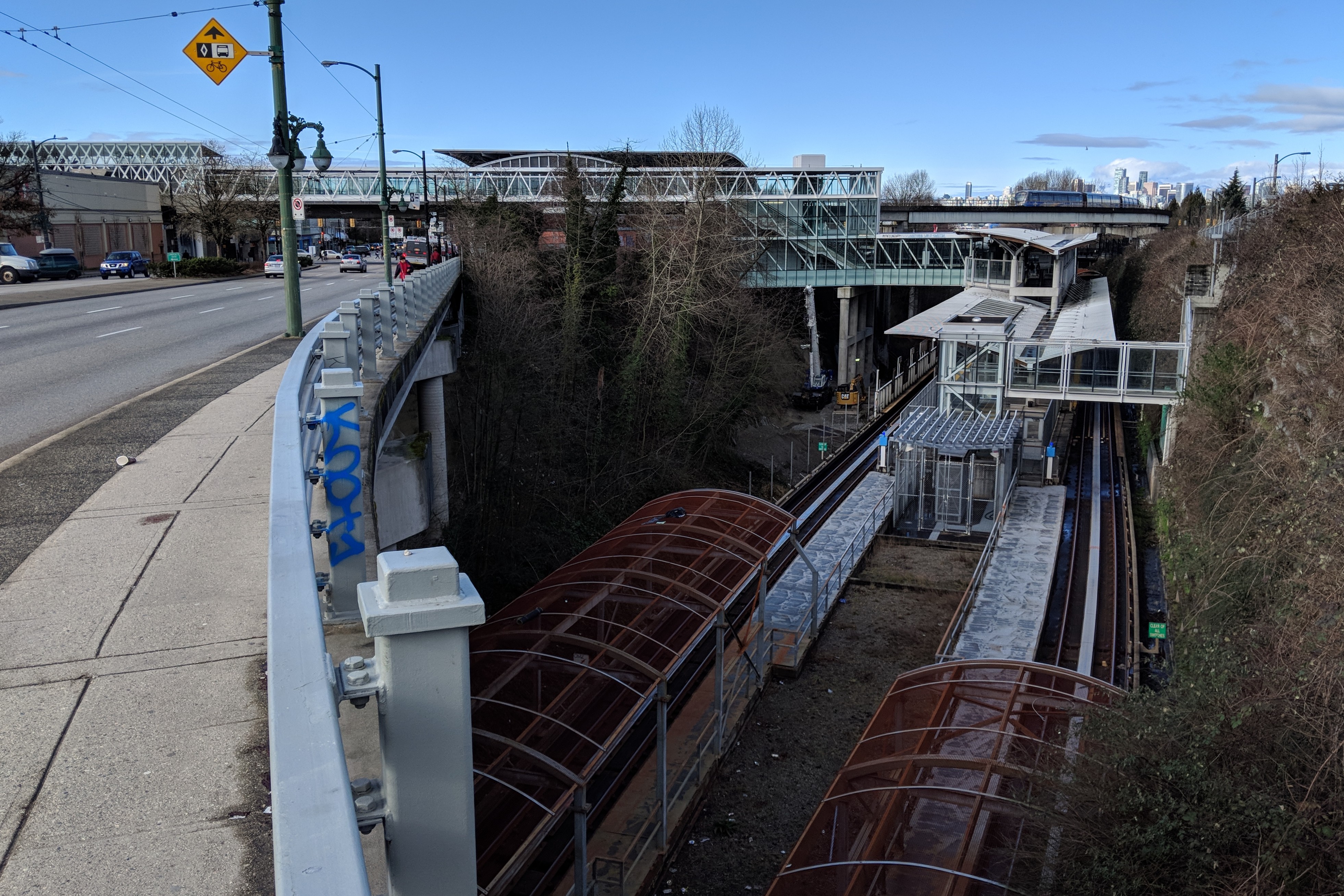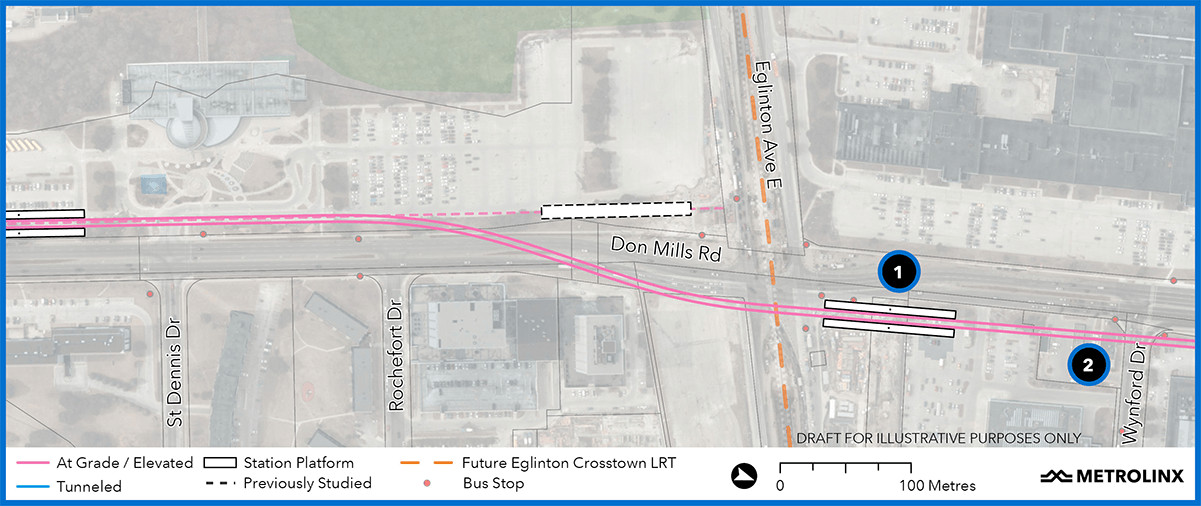denfromoakvillemilton
Senior Member
welcome to UTBut centre platform saves $10M on elevators. Why don't they spend the extra quarter Billion to save $10M.
(not meant to be critical of you, just some others who deemed centre platform the only way).
welcome to UTBut centre platform saves $10M on elevators. Why don't they spend the extra quarter Billion to save $10M.
(not meant to be critical of you, just some others who deemed centre platform the only way).
Yeah, I think we get the point about now. The Ford government is evil for getting the throwing away the RL. No need to mention it everytime.Very unfortunate this government decided to throw RL work and money down the drain.
Because the structure for the 2 tracks before and after the station does not need to be separated?But centre platform saves $10M on elevators. Why don't they spend the extra quarter Billion to save $10M.
(not meant to be critical of you, just some others who deemed centre platform the only way).
Yeah, I think we get the point about now. The Ford government is evil for getting the throwing away the RL. No need to mention it everytime.
Perhaps so, but we can't just sit here and complain that the RLS was cancelled in favor for the OL for the next decade or so. I don't think that'll bring the RLS back. The OL is moving forward whether we like it or not. Metrolinx definitely needs to be more transparent/specific with theirs plans I will definitely agree with that.Nah I think I'll go ahead and mention it.
Evil? No. Foolish and hypocritical? Yes.
Can't pretend that work on that project couldn't have simply continued while the DRL South moved forward.
Perhaps so, but we can't just sit here and complain that the RLS was cancelled in favor for the OL for the next decade or so. I don't think that'll bring the RLS back. The OL is moving forward whether we like it or not. Metrolinx definitely needs to be more transparent/specific with theirs plans I will definitely agree with that.
Allocated doesn't mean spent. We will never know how much of the $150m did they spend.Worst part is that the Prov gave themselves $150M to study RLN. Since they didn't exactly have anything to show for it, what'd they do with that money for two years.
Probably will have an enclosure as it passes over the archery range. There are bad shots, and there bad shots.
The "Science Centre" Station is to be elevated and f-a-r from the Science Centre. More closer to the "Real Canadian Superstore", so maybe that should be the name of the station. (If the corporation pays for it, of course.)
The Don Valley bridge/viaduct/crossing/ford...
There had better be room on it for a bicycle and pedestrian crossing as well.
This map from the Conditions Report shows the MSF site in black dashed outline.
There could be a shallow valley below the hydro lines to the west of Beth Nealson Dr.
so maybe the guideway could come down and follow the contours.


But centre platform saves $10M on elevators. Why don't they spend the extra quarter Billion to save $10M.
(not meant to be critical of you, just some others who deemed centre platform the only way).
Because the structure for the 2 tracks before and after the station does not need to be separated?
Heck, even looking at some of the early station layouts, we can already see some red flags in the design that might cause capacity issues on the Ontario Line in the future.
Notice that Eglinton-Don Mills Station (I refuse to call it Science Centre) on the Ontario Line is positioned entirely north of the Eglinton Line. Given this positioning, it's most probable that passengers who are transferring from the Eglinton Line to the Ontario Line will be entering the Ontario Line platform from the south side of the OL platform (this is the side closest to Eglinton Avenue). This is a big deal because it will result in poor load balancing on the OL trains. The south end of the train will be over capacity, while the north end of the train is empty. This means that passengers waiting on the south end of platforms at downstream stations (say, at Throncliffe Park or Pape Station), will be presented with totally full cars, and will be unable to board, despite the north end of the train largely being empty. At best, this will reduce the capacity of the line, as some passengers will not be able to board. At worst, this will reduce the capacity and the headways of the line, as badly behaved passengers hold doors in an attempt to squeeze into stations.

I know this sounds all very academic and nitpicky, but when you're trying to achieve 90s headways, you don't have the luxury of having any stations with poor pedestrian layouts, as this will impact your achievable capacity and headways.
We have a similar situation limiting the capacity of the Yonge Line right here in Toronto. Notice in the below diagram of the Bloor-Yonge station that the Line 2 platforms are at the north side of the Line 1 platforms. This results in passengers transferring from the Bloor Line, to the Yonge Line crowding at the north end of the Yonge Line platform, while the south end remains relatively empty. This causes a load imbalance on the trains, where the north of the train is overcapacity, while the south end is empty (you can see this effect if you watch Yonge Line trains pull into B-Y Station during rush hour). For the same reasons I described above, this culminates in a significant negative impact on the capacity and headways on the Yonge Line.
What this means is that even if the Yonge Line was could run at the 90s headways permissible by the TTC's ATO system, the poor layout of Bloor-Yonge Station alone would make running the trains at this frequency near impossible. And even if they could be run at that frequency, the poor load balancing on the trains would limit the effective capacity of the line, as the northern cars on the train will be over capacity, while the southern end is empty.
View attachment 274918
This highlights one of the reasons why I say 90 second headways, and their theoretically achievable capacities, are very fickle, and should not be depended upon. If those are the frequencies and crowding standards you're designing around, you have zero room to screw around with poorly designed stations and various other factors. It also means that value engineering (which the Ontario Line is susceptible to) could end up throwing away whatever theoretical capacity you thought you had.
For Eglinton-Don Mills Station specifically, Metrolinx needs to be very careful about how they're handling pedestrian distribution within the station. This is going to be one of the three most used stations of the line, so it is important that they encourage passengers to distribute themselves within the trains in the most efficient manner. Unfortunately the early design suggests that they're going to repeat the design mistakes of Bloor-Yonge Station.
Thanks Den - you seem to one of the real nice guys here.welcome to UT
But centre platform saves $10M on elevators. Why don't they spend the extra quarter Billion to save $10M.
(not meant to be critical of you, just some others who deemed centre platform the only way).
3 hour periods = short bursts. got it.
View attachment 274823
You people have never ridden a fully automated system, have you?
They make the Yonge Line feel clunky and slow. And the number of systems built and under construction with the ability to run at 90 seconds from day one are numerous.